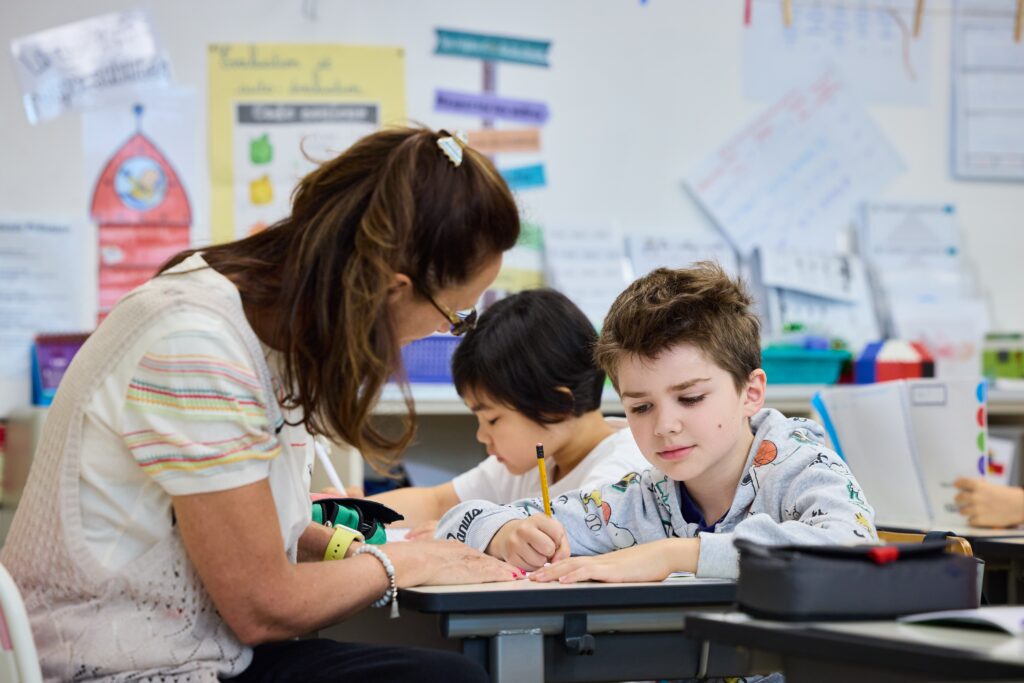You’ve probably heard the saying “unity is strength.” Did you know that some animals, like ants and fish, and even some plants , coordinate to obtain more food or have a better chance of surviving in their environments? They are undoubtedly a prime example of how the overall conditions of a group can be improved through cooperative work.

For this reason, it’s not surprising that this type of teamwork has been implemented in education through cooperative learning. This pedagogical method is far removed from the models typically used in classrooms, as it involves participatory processes and encourages interaction rather than passive listening. Although it has been used occasionally in traditional training, more and more teachers are turning to it more frequently.
What is cooperative learning?
After evaluating and analyzing a teaching experience based on this methodology, university professors and educators have noted that “cooperative learning is an educational methodology based on the interaction of small work groups in which students internalize shared responsibility for learning all types of content.”
With this premise in mind, it is important to emphasize that the composition of these groups seeks heterogeneity and socialization so that all members can contribute different characteristics to the collective by interacting with each other.
Main characteristics of cooperative learning
To fully understand the concept of cooperative learning, it’s necessary to delve deeper into its main defining characteristics. This makes the concept much more visual and applicable in real-life contexts:
- Responsibility and commitment: All team members must demonstrate the responsibility and commitment necessary to achieve the proposed goals, both individually and collectively.
- Two-way communication: It is essential to have tw way communication when developing tasks, both among group members and in the group’s relationship with the person responsible for learning.
- Interdependence: This methodology is characterized by the interdependence among participants, which implies that the effort will be beneficial to the group and that the results obtained will be identical for all members; in other words, it is about working for the common good.
- Heterogeneity in groups: One of the unavoidable aspects when selecting groups is heterogeneity, perfectly argued by business management expert Stephen P. Robbins, who states that “each team has different needs and its members must be selected in such a way as to ensure that all the different roles are covered .”
- Socialization and Interaction: Socialization and interaction among team members is another fundamental principle of cooperative learning. It’s not enough to simply distribute tasks individually; it’s essential to interact to develop them collaboratively. Robbins also speaks to this point, emphasizing the need to ” understand the individual strengths that each person brings to the team .”
- Self-assessment: Self-assessment of results is another key factor in this type of training, as it promotes reflection and critical thinking, both at the collective and individual levels.
Difference between cooperative and collaborative learning
It is important not to confuse cooperative learning with so-called collaborative learning, they are not the same.
Collaborative learning is based on equality among its members and does not at any point present a figure who directs the process, the starting ideas, or the conclusions to be reached. Let’s say it’s about mutual support in the learning process of diverse individuals.
Cooperative learning, on the other hand, does have a trainer or leader who determines the learning guidelines, the aspects to be addressed, and the final learning outcome. Thus, we see how the main difference lies in the structuring and organization of learning, which, in this case, occurs in a coordinated manner, while in collaborative learning, it is more free-form.
How to apply cooperative learning examples of techniques and strategies
One of the positive aspects of this type of training is the possibility of combining it with other methodologies that also deviate from traditional methods, such as gamification. When it comes to applying cooperative learning, numerous examples illustrate its usefulness, many of which can be seen today in university classrooms and vocational training.
Team competitions
Learning through fun plays a key role in cooperative learning strategies. A good example of this is team quizzes, where groups are defined and participate in a question-and-answer game. Communication, interaction, and shared responsibility are essential to achieving the desired results.
Group discussions
Group discussions are another of the most common methods when it comes to implementing cooperative learning. Beyond the inevitable two-way nature of the process, it requires basic skills such as socialization, individual work for collective purposes, and a diversity of opinions.
Furthermore, the interdependence between group members is evident, given that the arguments of each participant during the debate will have an impact on the team’s results.
6 Thinking Hats Technique
Although it is not a learning method, but rather a conflict resolution technique, it can be very interesting to apply in this area, since the 6 thinking hats strategy seeks to assign a different role to each member of a group made up of six people and a different approach to the same problem.
Why not extend this process to gaining different perspectives on the same topic? This also fosters diversity, which is essential for cooperative learning.
Interviews on a specific topic
Another good way for team members to learn from their colleagues is through interviews. By alternating questions and answers on a specific topic, it’s possible to exchange information and ideas in a very beneficial way, learning from the different people in the group.
Knowledge exchange
Interdependence in a cooperative learning group requires that all members know each other beforehand. To make the most of the initial introduction, it’s recommended that each member share some of their knowledge from the outset. This way, everyone can understand what each member can contribute and how to do it.
Advantages of cooperative learning
Expert research on practical cases of cooperative learning has yielded conclusive results that demonstrate significant improvements, both in the workplace and in higher education . Some of the most important advantages derived from these approaches are the following:
- Proactivity: Participants tend to take the initiative and make proposals, as they feel integrated into an egalitarian group in which they can offer truly useful contributions to the team’s progress.
- Motivation : As a result of this involvement, the motivation to carry out the tasks and actions that allow achieving the proposed objectives also grows.
- Understanding In teamwork, where projects go through different phases, cooperative learning fosters empathy and understanding among members, thereby facilitating the unification of efforts to achieve a common goal.
- Social skills : This is a methodology that implicitly involves the use of social skills to achieve interaction between participants.
- Efficiency: Teamwork involves members cooperating to create more agile processes and provide mutual support.
Far from the increasingly obsolete one-way learning, the cooperative learning methodology aims to focus on teamwork when acquiring knowledge. These methods make training more engaging, something essential in today’s age, where teachers are needed who are not complacent, who anticipate these new realities and are always one step ahead of pedagogical trends.










